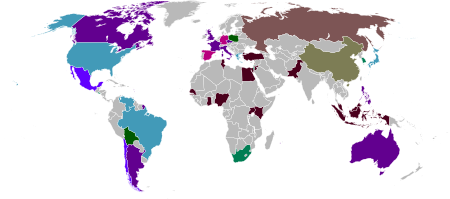Unit 4: Tipping point
Unit
4: Tipping point
Malcolm Gladwell presents an
interesting theory in his work, “The Tipping Point”, expressing his belief that
social behavior can be predictable to the point of following a specific
pattern. Gladwell insists that, “Ideas and products and messages and behaviors
spread like viruses do” (344). However, unlike Gladwell’s opinion, human
behavior is not a harsh, absolute, and repetitive trend, but rather; human
adaptation is a process that builds over time, is unique in every instance, and
is constantly evolving. There is a significant distinction between scientific
and social behavior.
Gladwell mentions that,
“Tipping points are moments of great sensitivity,” (349). He focuses too much
on moments, rather than logical conclusions. Change is a gradual action that is
best and most accurately analyzed over a long period of time, and is most
apparent when done so.
Societal attitudes towards
same-sex relationships have gradually varied over time and place, from
requiring all males to engage in same-sex relationships, to casual integration,
through acceptance, to seeing the practice as a minor sin, repressing it
through law enforcement and judicial mechanisms, and to proscribing it under
penalty of death. In a 1976 study, Gwen Broude and Sarah Greene compared
attitudes towards and frequency of homosexuality in the ethnographic studies
available in the Standard cross-cultural sample. They found that out of 42 communities: homosexuality was
accepted or ignored in 9; 5 communities had no concept of homosexuality; 11
considered it undesirable but did not set punishments; and 17 strongly
disapproved and punished. Of 70 communities, homosexuality was reported to be
absent or rare in frequency in 41, and present or not uncommon in 29.
Once
upon a time, same-sex relationships and mainly homosexuality did not use to
have the acceptance that it has nowadays. There were even kingdoms and civilizations
a who seriously punished even any kind of actions regarding to this behavior as
well as remarkable time in history in which it was. Amon those we have:
·
Early twentieth century
Despite all these matters
that occurred in the past, nowadays homosexuality is seen very differently. The
acceptance of it has significantly increased within the centuries for many
reasons. Of course, this has been obtained after constantly fighting within
several years. Yet, it was not only until the XX and XXI centuries when cities
such as Amsterdam, Barcelona Berlin, London, Los Angeles, Madrid, Montreal, New
York, Paris and San Francisco by organizing many events of great impact opened
a clear path in order for homosexuality to go through society. Therefore, we
have now a much more noticeable acceptance for it.
Societal attitudes toward homosexuality

2013:
Should homosexuality be accepted in society? Percentage of responders that
answered that it should be accepted:
·
81–90%
·
71–80%
·
61–70%
·
51–60%
·
41–50%
·
31–40%
·
21–30%
·
11–20%
·
1–10%
·
No data
Homosexuality varies greatly across different cultures and historical
periods, as do attitudes toward sexual desire, activity and relationships in
general. All cultures have their own values regarding appropriate and inappropriate sexuality; some sanction same-sex love and sexuality, while others may disapprove of such activities in part. As with heterosexual behavior,
different sets of prescriptions and proscriptions may be given to individuals
according to their gender, age, social status or social class.
Since the 1970s, much of the
world has become more accepting of homosexual acts and relationships. A 2017 book by Professor Amy Adamczyk based on years of mixed
methods research, shows that these cross-national differences in acceptance can
be explained by three factors: the strength of democratic institutions, the
level of economic development, and the religious context of the places where
people live.[4] The Pew Research Center's 2013 Global Attitudes Survey "finds broad acceptance
of homosexuality in North America, the European Union, and much of Latin
America, but equally widespread rejection in predominantly Muslim nations and
in Africa, as well as in parts of Asia and in Russia". The survey also
finds "acceptance of homosexuality is particularly widespread in countries
where religion is less central in people's lives. These are also among the
richest countries in the world. In contrast, in poorer countries with high
levels of religiosity, few believe homosexuality should be accepted by society.
Age is also a factor in several countries, with younger respondents offering
far more tolerant views than older ones. And while gender differences are not
prevalent, in those countries where they are, women are consistently more
accepting of homosexuality than men.

Wow I loved your take on this unit's topic. Very well developed ;)
ResponderEliminar